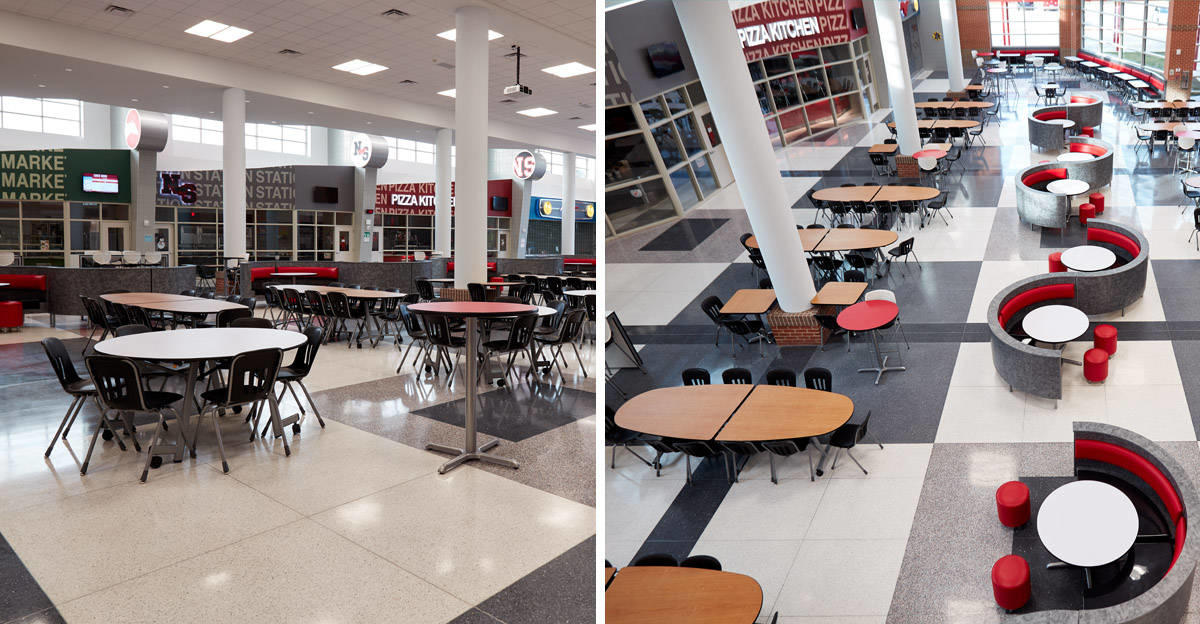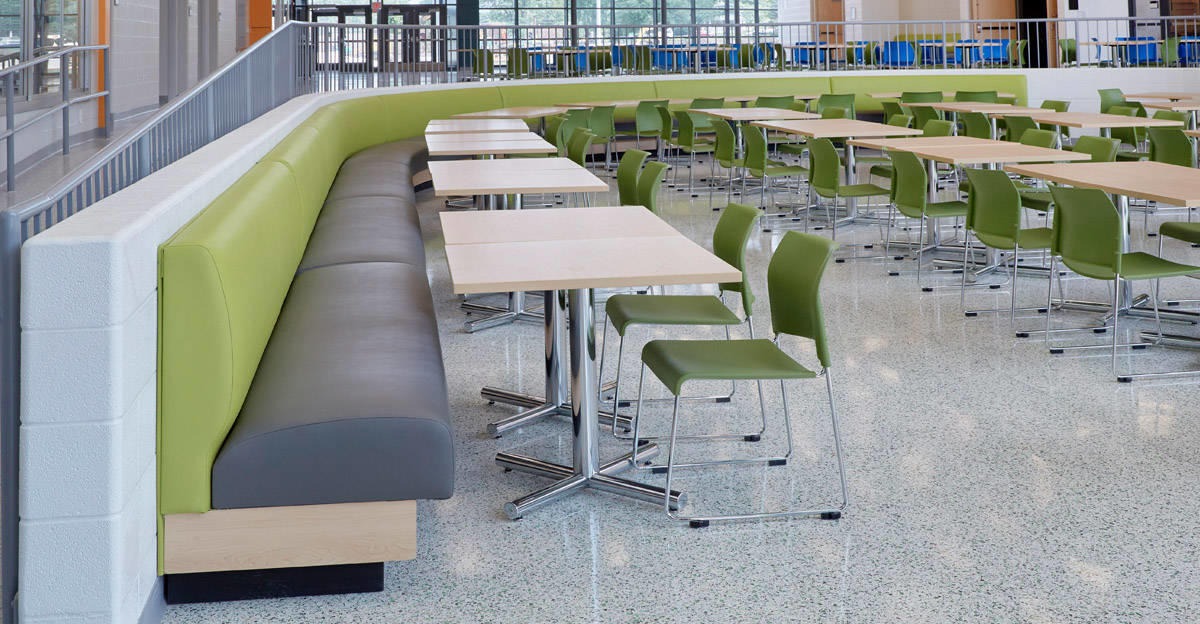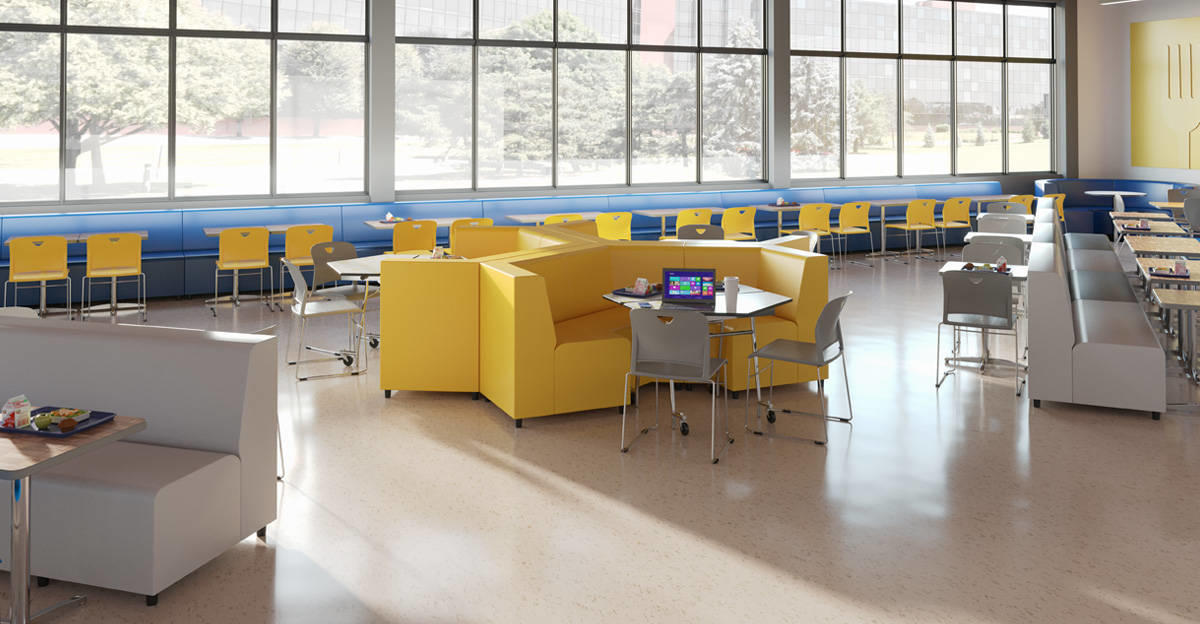K-12 leaders often take the design of their school cafeterias for granted. As a result, these spaces tend to feel very institutional and uninspiring.
That’s a big mistake. School cafeterias are places where everyone comes together during the school day. This represents a key opportunity to inspire school pride and a sense of community among students—and the design of the space can help foster this spirit.
School cafeterias can also become more functional by supporting informal learning activities when they’re not being used for food service. Here’s some advice for creating school cafeterias that are places students want to spend time in, leading to a stronger sense of community and more opportunities for learning.
Lose the institutional look and feel.
Students are subconsciously comparing your cafeteria to their favorite retail food chains when they’re dining, and too often the cafeteria comes up short.
Consider replacing traditional picnic-style seating with seating you might see at a restaurant of café, such as booths and café-style tables made of more comfortable materials. These would make the space more inviting, giving students another place to gather and collaborate on their studies.
Think creatively.

Take inspiration from other food-service venues in designing your cafeteria. How can you increase food-service revenue while making your cafeteria an attractive place to be? Could you create a food court or use self-service kiosks to lend a more modern feel to your dining programs while also increasing the options available for students? How about a cafe-style section with coffee and pastries?
Power the space for learning.
To make the space functional for learning or studying, consider how you can make electrical outlets readily available for students to plug in their digital devices. For instance, you could embed outlets in the floor, or choose tables and bench seating with outlets built into the furniture.
Breaking the Mold
When Strongsville, Ohio, built a new middle school a few years ago, one of the most innovative features of this new building was its two-story cafeteria. The space is designed like a café, as administrators sought to re-create the kind of food court environment that students like hanging out in when they’re not in school.
The centerpiece of the design is a 61-foot-long, candy cane-shaped booth that runs through the middle of the cafeteria. Built by a custom booth manufacturer, it’s the largest piece of booth seating that the manufacturer had ever created for a school.
By breaking the mold on school cafeteria design, Strongsville has created an attractive and versatile space where students want to congregate—while also increasing the opportunities for learning beyond the classroom.

To learn more about creating a continuous learning culture through smart learning space design, download our free guide: “Learning Beyond the Classroom: How to Make Every Space a Learning Space.”
Download the Free Guide





Leave a Reply